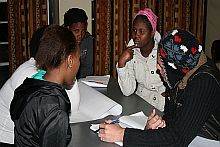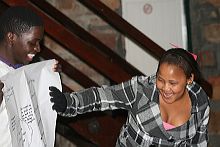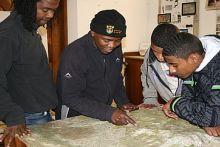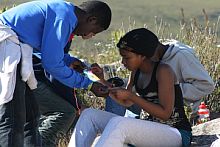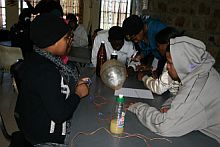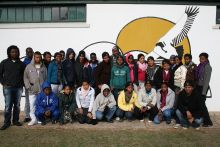SAEON camp for learners inspires science, leadership and poetry
|
In July, the SAEON Egagasini Node presented a marine science holiday camp for a group of 30 learners aimed at raising their awareness and deepening their understanding of the vital role played by our oceans.
Enthusiastic learners took time off from their winter school holidays to participate in SAEON’s initiative to bring South Africa’s environmental scientists into contact with the scientists of the future.
The destination was Potberg Education Centre in De Hoop Nature Reserve, a Marine Protected Area about 300 km from Cape Town. Potberg’s mountain slope separates the Breede River and the oceans, which makes it a field laboratory for environmental education studies ranging from mountain fynbos to rocky shore. Potberg is widely recognised as an ideal venue for fostering an understanding and love for the environment.
On arrival, learners were guided in an interactive process of mapping out their learning experience over the next two days. To assist in sharpening the focus of the camp, learners were divided into groups to discuss issues ranging from their behaviour at the camp to their expectations. This was followed by a presentation by each group and a debate before consensus was reached about the roll-out of the camp.
A night trail aimed at encouraging team work in a spooky environment assisted in getting learners to work together in their designated teams.
The first day of the camp turned out to be an eventful one as the group got to work with marine scientists from the Department of Environmental Affairs’ Marine and Coastal Management (MCM) in activities such as remote sensing. An introduction to Marine Science by MCM’s Mthuthuzelly Kenny Gulekana was followed by a hike up Potberg Mountain, during which learners had to investigate the relation between pressure (measuring the circumference of an inflated balloon at given levels) and temperature (with small thermometers).
The view of the river and the ocean from the top of the mountain was such that it inspired poetry in some young minds.


